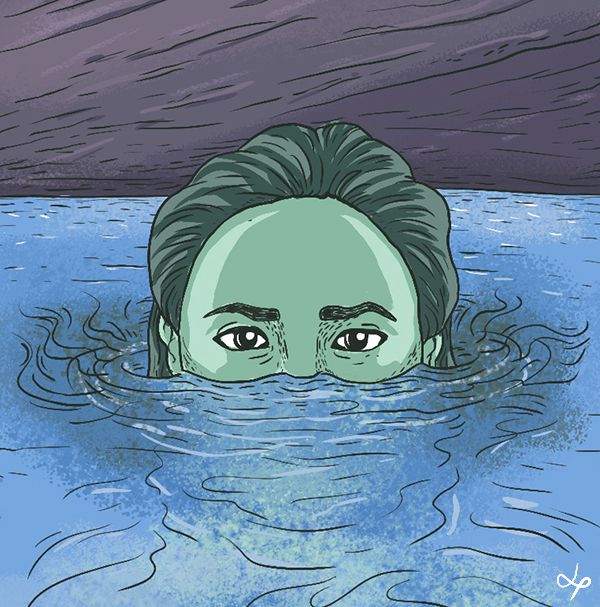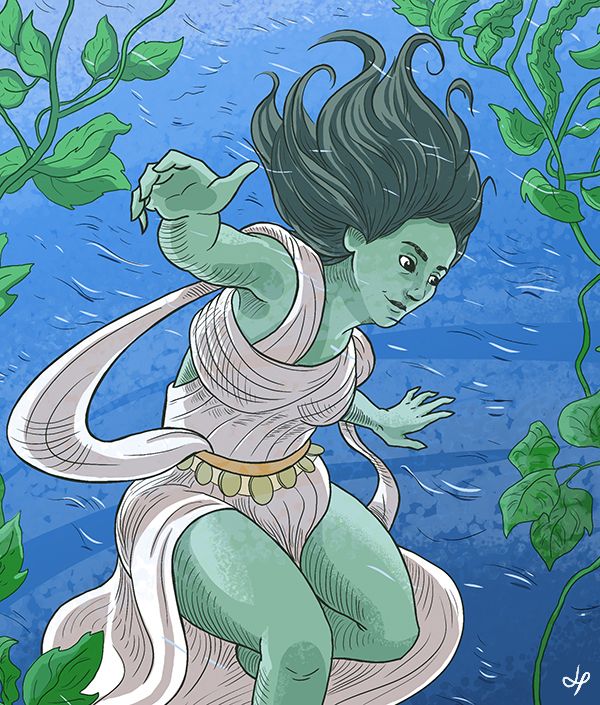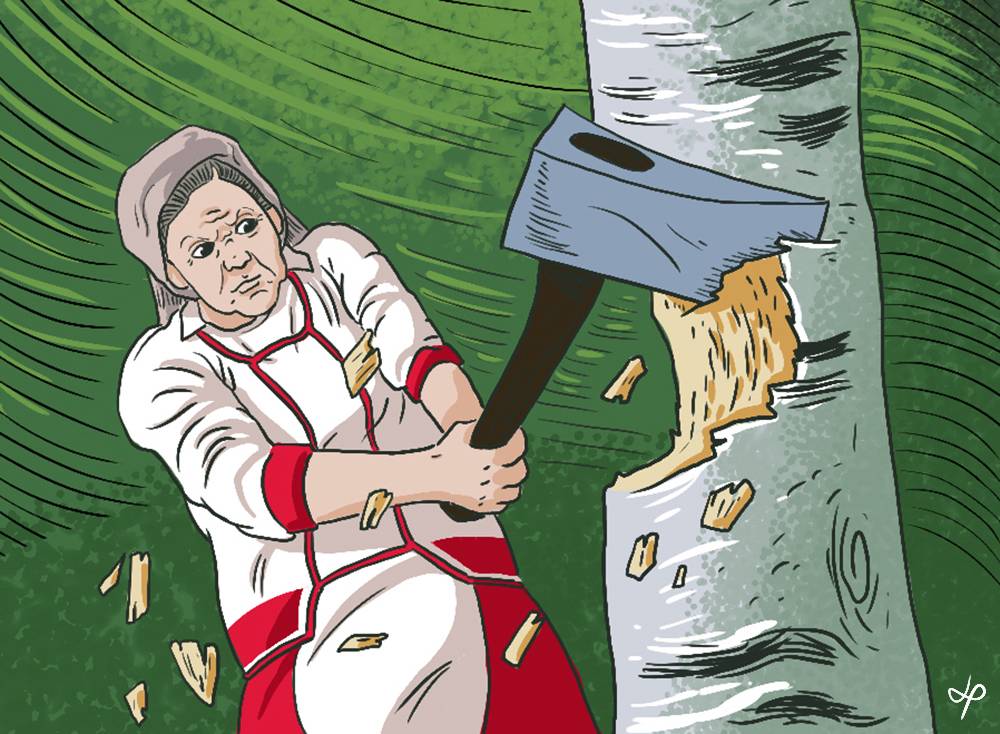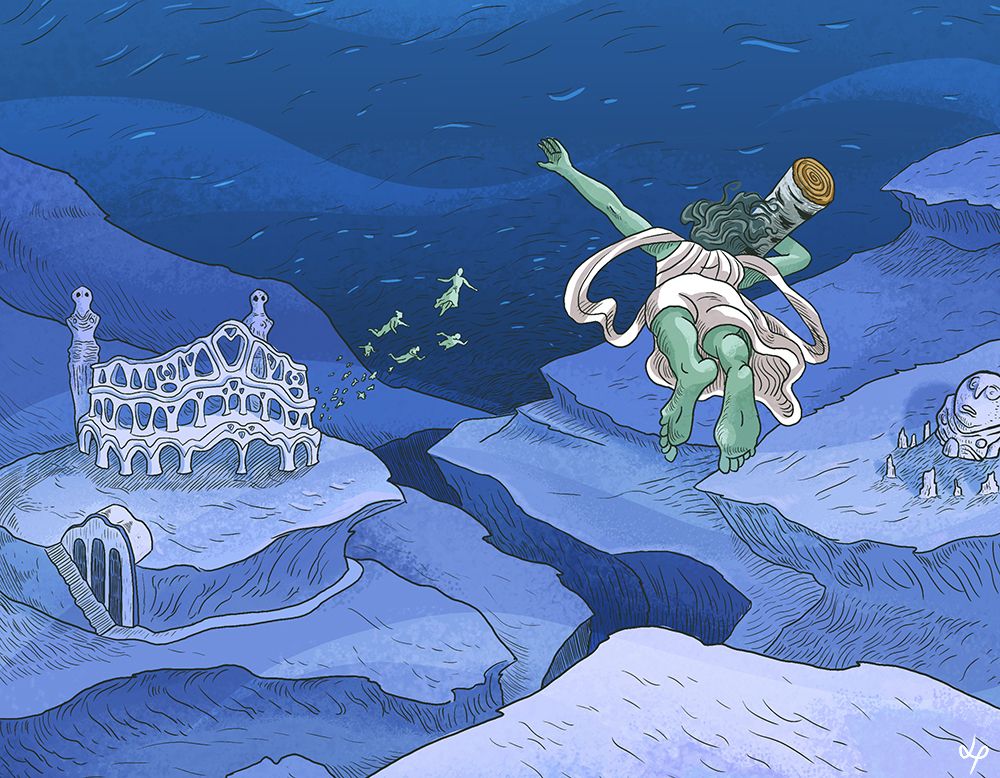She lives in waters, loves to sing and dance with her friends, helps the crops grow, and occasionally tickles men to death. She is the Rusalka, a female water spirit from Slavic folklore, beloved and feared for her powers. Her history, like her mossy hair, is long and tangled, and her role in the Slavic culture has changed from benevolent to maleficent. I’ll explore her ancient origin, follow her journey to present day, and delve into the reasons behind her drastic revision.
In the old days

The pagan beliefs of the ancient Slavs included a main pantheon of deities, as well as a variety of tutelary spirits - guardians or patrons of places and people. These spirits would often serve an intermediary function, between the deities and the people. They would have powers of their own and would do their own bidding, but they were also seen as an aspect of a certain deity, who was the source of their powers, and would serve their purpose in the human realm. The Rusalky were one such spirits. Being the guardians of bodies of water, their powers and functions were associated with moisture, irrigation and rainfall. They were helping people by bringing moisture to their fields, and nurturing the crops for a bountiful yield. But they wouldn’t do this of their own accord, not unless people took the time to grant them the respect they required, and present the adequate offerings. I’ll talk more about this below, in The Green Week Festival.
Appearance and activities
Belief in the Rusalka was most widely circulated among the Russians, but other Slavic peoples know her by different names: Boginka (little goddess), Navia/Navka/Mavka (a spirit from Nav, the underworld), Vila/Samovila (a name that comes from the same root as Veles, the Slavic god of cattle, waters, and the underworld) and many others.
The name of the Rusalka is derived from the Rusalye celebration (from the Greek ῥουσάλια, "feast of roses"), which is also another name for the Christian holiday Pentecost.
 They appeared as pale women, with green or brown hair and long arms, either naked, or covered in green leaves or dressed in light robes of mist. Even though their primary home are the waters, they can also be found in the woods, meadows, and fields. On their playful side they like to sprinkle the water around them, frolicking in the waves. They like to sit on the mill-wheel, splashing each other, and then dive deep, crying, "Kuku." When they come out of the water, they like to run about the woods and thickets, clapping their hands, dancing, and doing somersaults on the grass, while their laughter resounds far and wide in the forests.
They appeared as pale women, with green or brown hair and long arms, either naked, or covered in green leaves or dressed in light robes of mist. Even though their primary home are the waters, they can also be found in the woods, meadows, and fields. On their playful side they like to sprinkle the water around them, frolicking in the waves. They like to sit on the mill-wheel, splashing each other, and then dive deep, crying, "Kuku." When they come out of the water, they like to run about the woods and thickets, clapping their hands, dancing, and doing somersaults on the grass, while their laughter resounds far and wide in the forests.
In some stories the Rusalky transformed into swans, geese and ducks, or were mermaid-like, and in others they were huntresses or Amazon-like warriors. Depending on how they were treated, they would either help or hinder the hero of the story.
When displeased, they would entangle fishermen’s nets by sitting in the depths of rivers, flood fields by breaking the dams, or even cause torrential rains, and hailstorms. At night, perched on large rocks or nearby trees, they try to entice wandering men, lead them astray, and tickle them to death, or draw them down into the depths of the water.
Even after the Christianisation of the Slavic people (between the 7th and 12th century), many kept their old, pagan beliefs and traditions, in what they called dvoeverie - double faith. The blending of the old and new faith shaped how people saw Rusalky and the kind of stories they told about them. Their fertility powers were downgraded, and their femininity was a cause for fear. Their origin was also changed from spirits of nature to souls cursed to haunt the place of their death. They came to be seen as girls and young wives who have met an unnatural death, or have been cursed by their parents, and sometimes as children who have died unbaptized, or have been drowned or suffocated. Yikes!
The Green Week Festival
 In early June in some Slavic countries people celebrate a festival called Rusalye, also known as Green Week or Rusalka Week, a celebration for the dead and a fertility rite. It has been kept alive since ancient times.
In early June in some Slavic countries people celebrate a festival called Rusalye, also known as Green Week or Rusalka Week, a celebration for the dead and a fertility rite. It has been kept alive since ancient times.
Women would leave their towns and villages for the forests on the Thursday preceding Pentecost*, singing ancient songs and picking flowers to make into wreaths. In a forest clearing they would hold their ceremony. A young girl would be chosen as the Rusalka; her dress would be adorned by branches of birch, and flowers would be woven into her hair.
Birch trees were seen as a symbol of the deceased soul, so one of the trees would be chosen, and girls would bring it offerings of fried egg, bread, butter, and beer. Later, the chosen birch would be cut down, dressed in woman's robes, decorated it with garlands, colourful ribbons and pieces of cloth. The tree was then destroyed, usually by drowning. With this the women secured the goodwill of the Rusalky, sacrificing to them in order to protect their community.
During this week the Rusalky were believed to be more active and more dangerous, and for fear of them, people did not stay outdoors by night more than is necessary, did not bathe in rivers, did not clap their hands, and avoided all work in the fields that might anger them.
Conclusion
History has not been kind to the Rusalka. Once worshipped, she later became a malevolent creature, trickster, seducer and killer that was feared, disdained, and shunned to the edges of society. This change reflected the changing attitudes towards women in the Slavic culture and society.
But as we can see from the Green Week festival, her reputation has not been entirely tarnished.
Owing to her important role in the life of the Slavic peoples, ancient and present, the Rusalka remains as one of the most iconic beings of their folklore.
*Pentecost, also called Whitsunday, is a Christian holiday, celebrated on the seventh Sunday after Easter. It marks the beginning of the Christian church’s mission to the world.
Sources
John Arnott Macculloch and Jan Máchal: The Mythology of All Races/Volume 3 (Celtic and Slavic), University of California Press, 1999
Joanna Hubbs: Mother Russia: The Feminine Myth in Russian Culture, Indiana University Press, 1988.
Britannica, The Editors of Encyclopaedia. "Rusalka". Encyclopedia Britannica, 23 May. 2018, https://www.britannica.com/topic/rusalka
Linda Ivanits: Russian Folk Belief, M. E. Sharpy Inc., 1989
Comments (1)